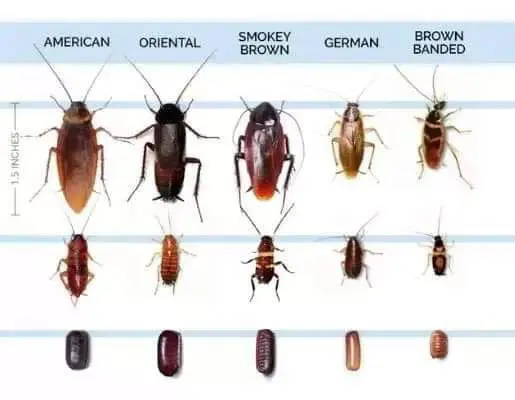German Cockroaches: The Uninvited House Guest
Cockroaches are unwelcome creatures, with their scuttling movements and unsanitary habits, they are often associated with dirt, decay, and disease. Among the various cockroach species, the German cockroach is a particularly common and troublesome pest in homes and buildings.

Identifying the German Cockroach
German cockroaches are relatively small, typically measuring between 1/2 inch to 5/8 inch in length. They are typically light brown to tan in color, with two dark, parallel stripes running lengthwise on their pronotum, the shield-like structure behind their heads. Unlike other cockroach species, German cockroaches have wings but rarely fly. “German roaches are smaller and are lighter in color than American roaches†says Chris Bennett the Sales Manager at J&N Pest control.
Habits and Habitats
German cockroaches are nocturnal creatures, preferring the darkness and quiet of night to emerge from their hiding places. They seek out tight, confined spaces, often nesting in cracks and crevices, behind appliances, and within wall voids – they especially love to be behind or under refrigerators. “German roaches usually start in the kitchen and bathroom. Behind appliances and electronics are good places to start looking†says Bennett. These cockroaches are attracted to warm, humid environments, making kitchens and bathrooms their preferred habitats.
Sources of Infestation
German cockroaches can enter homes in various ways, including hitching a ride on grocery bags, packages, or used furniture. They can also migrate from neighboring infested apartments or buildings. “These roaches are brought in from numerous sources from delivery boxes, items from storage or other places. Clean houses can still get German roaches since they are hitchhikers,†says Bennet. Once inside, they thrive in cluttered environments with readily available food and water sources. According to Chris Bennett, “each roach egg sack can have 32 to 36 offspring meaning they reproduce quickly once inside your home.â€
Health Hazards
German cockroaches are not known to bite humans, but their presence can pose significant health risks. They can carry and spread bacteria, viruses, and parasites that can cause various illnesses, including food poisoning, respiratory infections, and allergic reactions. Their feces and shed skin can trigger asthma attacks and exacerbate allergies.
Preventing Infestations
Preventing German cockroach infestations requires a multi-pronged approach:
Sanitation: Maintain a clean and organized home, regularly cleaning and disinfecting kitchens and bathrooms, eliminating potential food sources like crumbs and spills.
Moisture Control: Fix leaky pipes and faucets, and address any humidity issues to create an inhospitable environment for cockroaches.
Sealing Entry Points: Inspect and seal cracks and crevices around pipes, windows, doors, and electrical outlets to prevent cockroaches from entering.
Regular Pest Control Treatments: “the best way to prevent a cockroach infestation is by signing up for a quarterly pest control package with J&N Pest Control, so our team of skilled technicians can ensure your home will stay pest free. Cockroach treatments are an additional service, however, if a technician spots evidence of German Cockroaches they can quickly act to eliminate them before the problem is out of control.â€
Chris Bennett
Sales Manager, J&N Pest Control
German cockroaches are persistent and resilient pests, but with proper preventive measures and prompt action, homeowners can effectively combat infestations and maintain a cockroach-free environment. If you think you may have a German cockroach infestation contact us today so we can schedule an inspection and help you keep your home happy and healthy!

